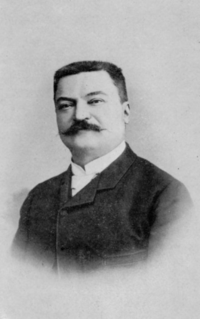Édouard Lucas
| Édouard Lucas | |
|---|---|
 |
|
| Born |
4 April 1842 Amiens |
| Died | 3 October 1891 (aged 49) Paris |
| Nationality |
|
| Fields | Mathematics |
| Alma mater | École Normale Supérieure |
| Known for | Lucas sequence, Lucas-Lehmer test, Lucas prime, Gauss-Lucas theorem, Lucas' theorem |
| Influenced | Derrick Henry Lehmer |
François Édouard Anatole Lucas (French pronunciation: [fʁɑ̃swa edwaʁ anatɔl lykɑ]; 4 April 1842 – 3 October 1891) was a French mathematician. Lucas is known for his study of the Fibonacci sequence. The related Lucas sequences and Lucas numbers are named after him.
Lucas was educated at the École Normale Supérieure. He worked in the Paris observatory and later became a professor of mathematics in Paris. In the meantime he served in the army.
In 1875, Lucas posed a challenge to prove that the only solution of the Diophantine equation:
with N > 1 is when N = 24 and M = 70. This is known as the cannonball problem, since it can be visualized as the problem of taking a square arrangement of cannonballs on the ground and building a square pyramid out of them. It was not until 1918 that a proof (using elliptic functions) was found for this remarkable fact, which has relevance to the bosonic string theory in 26 dimensions. More recently, elementary proofs have been published.
He devised methods for testing the primality of numbers. In 1857, at age 15, Lucas began testing the primality of 2127 − 1 by hand, using Lucas Sequences. In 1876, after 19 years of testing, he finally proved that 2127 − 1 was prime; this would remain the largest known Mersenne prime for three-quarters of a century. This may stand forever as the largest prime number proven by hand. Later Derrick Henry Lehmer refined Lucas' primality tests and obtained the Lucas–Lehmer primality test.
...
Wikipedia
